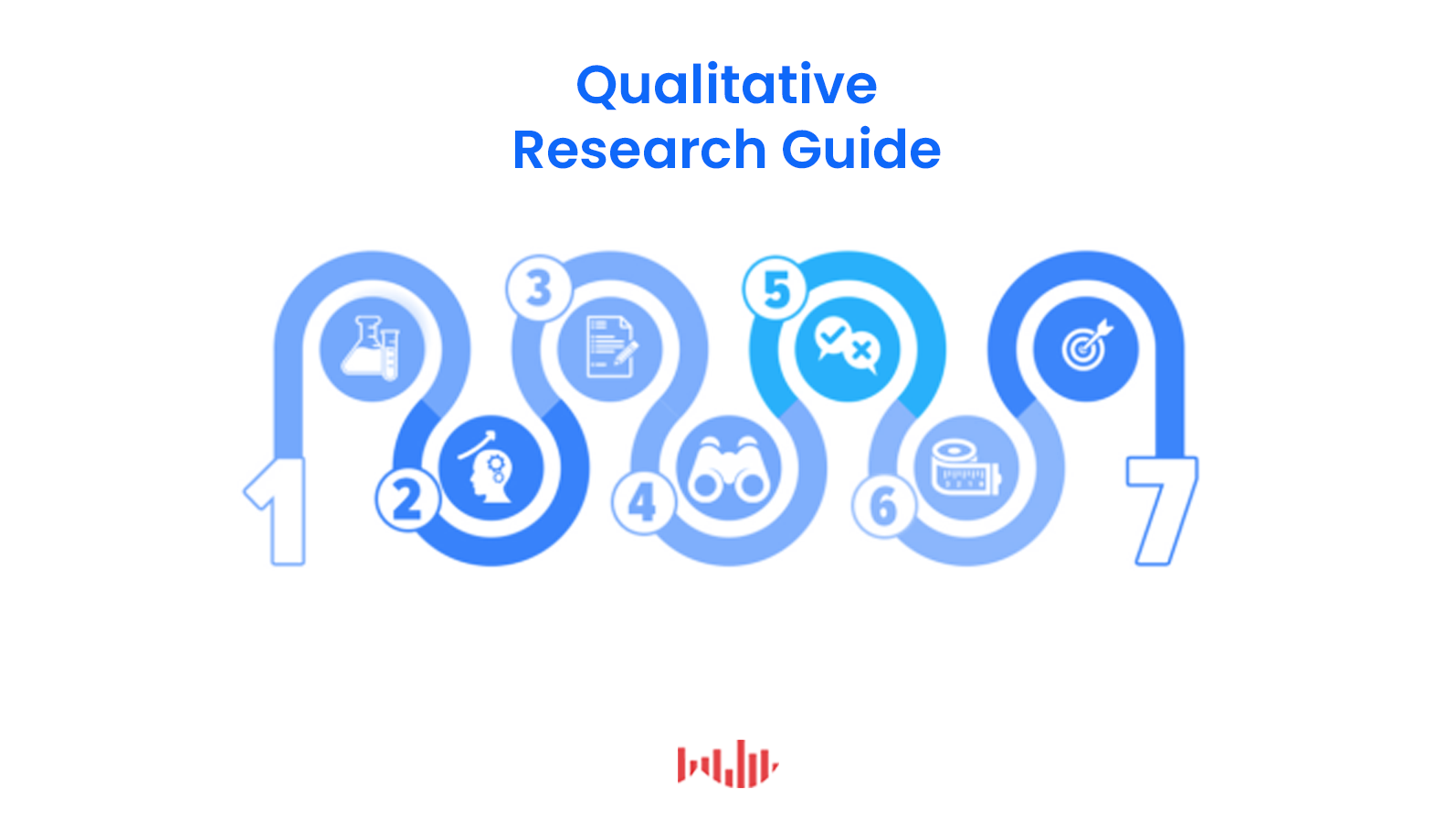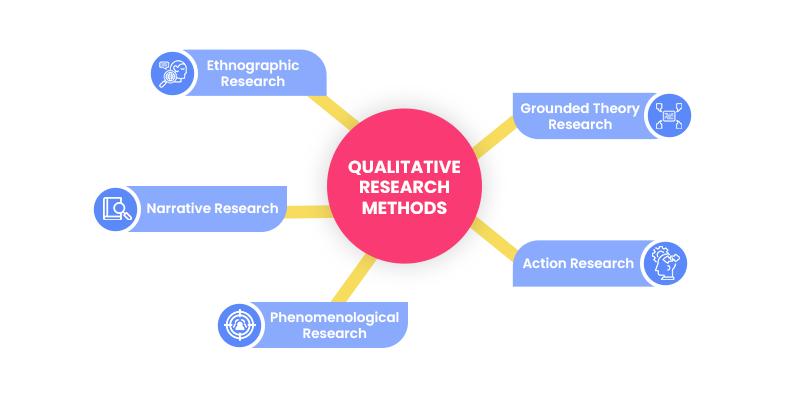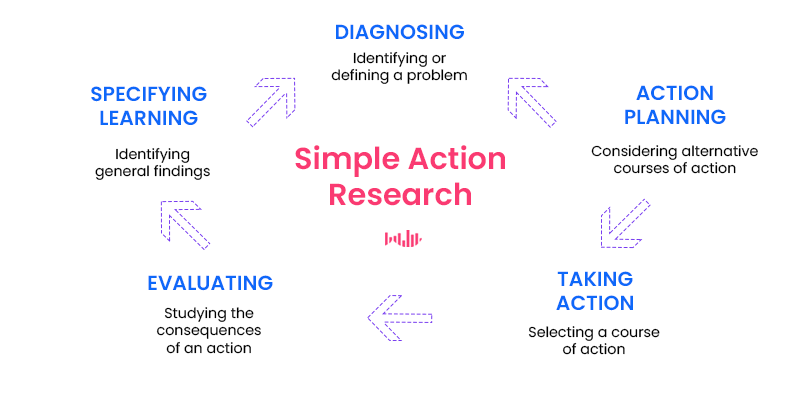The Complete Guide to Qualitative Market Research
 Qualitative research is one of the most prominent research methods in the ever-increasing research sphere. Running counter to quantitative research, qualitative research encompasses a distinct set of differentiating qualities (no pun intended). These attributes prove that these two methods ought not to be used interchangeably.
Qualitative research is one of the most prominent research methods in the ever-increasing research sphere. Running counter to quantitative research, qualitative research encompasses a distinct set of differentiating qualities (no pun intended). These attributes prove that these two methods ought not to be used interchangeably.
So what exactly is qualitative research? At a glance, this type of research method seeks to gather in-depth data about a phenomenon without focusing on numerical data or on quantities.
But there is much more to this kind of study method. Learn holistically about qualitative market research with this complete guide.
What Defines & Makes Up Qualitative Research?
Qualitative research is centered around experiences, ideas and opinions. As such, it does not focus on statistical or quantitative outcomes. Instead, it seeks out an in-depth understanding of an issue, occurrence or phenomenon.
Thus, this research method zeroes in on the “what” and more importantly, the “why” of a research subject. (Unlike quantitative research, which focuses on the “how much”).
Here are some of the applications of qualitative research:
Understanding an issue in greater depth
Finding the reason behind an occurrence (whether it’s desirable or undesirable)
Uncovering trends in target market opinions
Forming educated solutions to address customer/studied subject concerns
Discovering the causes of certain actions
Qualitative research generally relies on a smaller sample size in order to get a deep read of happenings, causes and motivations. This kind of research method functions through the usage of open-ended and exploratory questions.
Understanding the “why” behind an issue is then used to make decisions on how to resolve the issue or how to improve on an existing productive situation.
Qualitative data must occur in natural environments. This denotes a kind of environment in which participants discuss their opinions at length and at ease, which researchers use to gain deeper knowledge and form inferences around a topic.
Prior to the internet, this kind of research was conducted in-person, but with the advent of the internet and innovations in market research, qualitative data has been collected online. The digital space can also serve as a natural environment.
The Five Main Types of Qualitative Research
Just as with quantitative research, there is not a single approach to conducting qualitative research. On the contrary, there are five main varieties of performing qualitative research. Aside from their methodology, these sub-categories also seek different types of answers and conclusions.

1. Narrative Research
This research is used to form a cohesive story, or narrative, by way of consolidating several events from a small group of people. It involves running in-depth interviews and reading up on documents featuring similar actions as a means of theme-searching.
The point of this is to discover how one narrative is shaped by larger contextual influences. Interviews should be conducted for weeks to months and sometimes even for years. The narrative that the researcher uncovers does not have to be presented in sequential order.
Instead, it should be projected as one with defined themes that attempt to reconcile inconsistent stories. This method can highlight the research study’s ongoing challenges and hardships, which can be used to make any improvements.
2. Ethnographic Research
The most common qualitative research method, ethnography relies on entrenching oneself in various participant environments to extract challenges, goals, themes and cultures.
As the name suggests, it involves taking an ethnographic approach to research, meaning that researchers would experience an environment themselves to draw research. Using this firsthand observation, the researcher would not need to then rely on interviews or surveys.
This approach may seem to be far-fetched where market research is concerned, but it is doable. For example, you’d like to see the effectiveness or frustration that customers face when using your product. Since you can’t follow them home, you can request videos that show them using it. Many big brands have call-outs on their websites (ex: on product pages) for their customers to send in videos of their interactions with the products.
3. Phenomenological Research
This qualitative method entails researchers having to probe a phenomenon or event by bringing lived experiences to light and then interpreting them. In order to achieve this, researchers use several methods in combination.
These include conducting surveys, interviews and utilizing secondary research such as available documents and videos on the studied phenomenon. Additionally, as in ethnographic research, phenomenological research involves visiting places to collect research.
These will help you understand how your participants view your subject of examination. In turn, you will gain insight into the participants’ motivations.
In this research type, you would conduct between 5 and 25 surveys or interviews, then peruse them for themes. Once again, you would scrutinize experiences and sentiment over numerical data.
4. Grounded Theory Research
In contrast to phenomenological research, which seeks to fully form the core of an issue, grounded theory attempts to find explanations (the why) behind an issue. To achieve this, researchers use interviews, surveys and secondary research to form a theory around the issue/occurrence.
The sample of this study tends to be on the larger side, at 20-60 participants. Data extracted from this type of research is interpreted to determine the reasoning behind, for example, heavy usage of or frustration with a product. These types of studies help a business innovate an existing product by getting into the weeds of how it’s used.
5. Action Research

This type of research involves researchers and participants working collaboratively to bring theory to practice. Also called participatory research, collaborative inquiry, emancipatory research and action learning, this method entails the act of “learning by doing.”
This means a group of researchers come together to find and address a problem, resolve it and then study the success of their endeavors. If they underperformed or their outcomes don’t satisfy their expectations, they would then reattempt the process.
In action research, a researcher spends a considerable amount of time on collecting, analyzing, and presenting data in an ongoing, periodic process. This involves researchers coming up with their own surveys and interviews around a subject matter, then presenting their findings to one another to draw conclusions and solutions.
They would put into practice the means to improve a situation and continue measuring their success throughout the process.
Examples of Questions for Qualitative Research
When working within the capacity of any of the above research types, it’s crucial to ask the right questions. Here you’ll find the questions you can use when conducting each of the five types of qualitative research.
Bear in mind that some of these questions will appear to be similar in nature; some are even interchangeable. That is normal, as researchers may search for the same answers, but apply a different approach in their research method.
In any case, all of the below features questions that fit within the larger qualitative research framework.
Learn more about asking insightful market research questions. Here are a few examples of the questions within the five categories:
1. How do people who witnessed domestic violence understand its effects in their own relationships?
Variable: Views of domestic violence on one’s own relationships
Demographic: People in relationships, who’ve witnessed domestic violence
Qualitative Research Type: Narrative
2. What are the lived experiences of working-class Americans between the ages of 20 and 40?
Variable: Experiences and views of a working-class background
Demographic: Working-class Americans ages 20-40
Qualitative Research Type: Narrative
3. How do Asian Americans experience reaching out to address mental health concerns?
Variable: The experiences in seeking out care for mental health
Demographic: Asian Americans seeking help for mental health
Qualitative Research Type: Ethnographic
4. What do you enjoy about this product or service?
Variable: The positive experiences of using a particular product/service
Demographic: The target market of a product or service
Qualitative Research Type: Ethnographic
5. How have people who have experienced poverty changed their shopping habits when they entered the middle (or higher) class?
Variable: The changes or stagnation in shopping habits
Demographic: those who experienced poverty, but climbed the social ladder
Qualitative Research Type: Phenomenological
6. What was it like when you had a negative online shopping experience?
Variable: unpleasant shopping experiences
Demographic: a group that is most likely to shop at a particular online store
Qualitative Research Type: Phenomenological
7. What influences managers in private sectors to seek further professional advancement?
Variable: Motivation for seniority
Demographic: Managers in the private sector
Qualitative Research Type: Grounded Theory
8. How do women in third world countries set up financial independence?
Variable: Efforts at reaching financial independence
Demographic: Women in third-world countries
Qualitative Research Type: Grounded Theory
9. What impact does collaborative working have on the UX optimization efforts of a telecommunications company?
Variable: effects of collaboration on the UX of a telecommunications company
Demographic: workers in the telecommunications space
Qualitative Research Type: Action Research
10. What strategies can marketing managers use to improve the reach of millennial customers?
Variable: Strategies to improve millennial reach and their outcomes
Demographic: Marketing managers
Qualitative Research Type: Action Research
When to Use the Research and How to Analyze It
The qualitative research method has specific use cases. You ought to consider which is best for your particular business, which includes your strategy, your marketing and other facets.
The core of qualitative research is to understand a phenomenon (a problem, an inadequacy, and a slew of other occurrences) including its causes, its motivations, its goals and its solutions. Researchers do this by observing smaller portions of a population.
Researchers should use this form of research whenever you need to get the gist of a particular occurrence or event. It is particularly useful for studying how your target market experiences certain situations and how it feels about them.
There are several more specific ways that elucidate why this research style is valuable if not completely necessary. Here are some of the most crucial ways this method of research is vital:
Helps brands see the emotional connections customers have with them
Allows brands to find gaps in customer experience (CX) and user experience (UX)
Enables brands to create experiences that are more tailored to their target market
Helps businesses understand how they can improve on their product, service or CX
Finds experiences that customers had that highlight sensitive topics/language for them
Shows businesses how customers compare them to their competitors
Identifies possible solutions and innovations based on customer attitudes and experiences
To analyze qualitative research, you should first identify your subject of study and decide on the type of research you need to conduct based on the five types of research that fall under the qualitative category.
Then, brainstorm several questions that you can use to form the base of your studies. During the process make sure to jot down (either digitally or otherwise) your observations. For example, record interviews and store surveys in an organized database.
Make sure you ask open-ended questions in surveys, interviews, focus groups, et al. Aggregate secondary research such as government database documents, articles in your niche, images, videos and more.
Search for patterns or similarities within your findings. When you group them together and organize them by demographics, you can start drawing conclusions and proposing solutions.
The Benefits and Drawbacks of Qualitative Research
Qualitative research can be extraordinarily beneficial. But as with other aspects of research and beyond, it too comes with a set of drawbacks. As a business owner, marketer or market researcher, you should know both the pros and cons. Here are some notable ones:
Benefits
More intimate understanding of context and causation: besides understanding “what” in a granular way, you also learn the “why” and “how” of a particular situation.
Understanding key experiences: Open-ended questions lead to unique answers, exposing things numerical-based surveys can’t answer.
A foundation of deep insights: The design of the study is made to understand how customers relate to particular occurrences, events, ideas and products.
Context-driven: Finding insights on motivation and past behaviors allows researchers to understand what their target market needs and what it tries to avoid.
No need to find and create the correct measuring units: Open-ended questions don’t require a scale, a number range or any other measuring tools — one less thing to worry about.
Smaller sample size: Smaller sample sizes allow researchers to study responses more thoroughly to form more accurate hypotheses and conclusions.
Inspirational: The responses received can also help researchers form new studies.
Flexible and detail-oriented: Since questions aren’t based on scales and other units, you can ask more creative and in-depth questions. Questions focus on details and subtleties for robust insights.
Drawbacks
Relies on researcher experience: It relies on the researchers’ experience; not all are familiar with industry topics.
Not statistically representative: Only collects perspective-based research; does not provide statistical representation. Only comparisons, not measurements can be executed.
Difficult to make copies of data. Individual perspectives make it hard to replicate findings, making it it more difficult to form conclusions.
More likely to have researcher bias: Both conscious or subconscious of the researcher can affect the data. The conclusions they draw can thus be influenced by their bias. (This can be avoided by using controls in data collection.
The Final Word
Market research is a wide-spanning undertaking. It has a wide swath of aspects, practices and applications. As such, researchers should know its main categories and qualitative research is one such category of significance.
As opposed to quantitative research, which has four methods, qualitative research has five — not all of which will be of use to your particular market research needs. In any case, this type of research involves imbuing as much context and particularities around a phenomenon as possible.
As such, researchers should create questions more specific to the aforementioned examples of this article. That is because those are more encompassing, generalized questions that researchers can attempt to answer after conducting all of their research and parsing of the findings.
But prior to that, researchers should ask several related questions around a particular topic and tailor those questions as best as possible to the target audience.
Frequently asked questions
What is qualitative research?
Qualitative research is a type of research that is conducted to gain deep or unexpected insights rather than focusing on numeral or quantitative data.
Why is qualitative research conducted?
Qualitative research is conducted to find the “why” of the research subject, rather than the “what’ of that subject. For example, qualitative research might be conducted to understand an issue more deeply, to understand why something is happening, or to learn how to address a target market’s concerns.
What is narrative research?
Narrative research is a type of research that is used to create an in-depth story about a phenomenon or event. It is conducted by interviewing a small group of people who were directly involved in the event.
How is ethnographic research conducted?
When conducting ethnographic research, the researchers use firsthand observations of an environment to more deeply understand the goals, challenges, or opinions of the target audience.
What is action research?
Action research is a type of qualitative research in which researchers and participants collaborate to better understand a phenomenon. Together the group works to find and solve the problem by gathering information on an ongoing and evolving basis.
Pollfish Marketing Team
Ready to Try Pollfish?
Create your survey with AI, target high-quality respondents starting at $0.95 per complete, and start getting results in just minutes in real-time. From running a simple product concept survey to managing a constant stream of trackers for dozens of clients in dozens of countries, we’ve got you.
